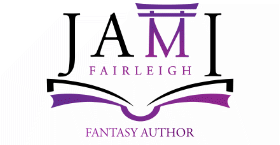
The Controversy Around Content and Trigger Warnings

Content warnings (also called trigger warnings) were not something I was aware of while getting Oil and Dust ready for publication. In fact, when doing the research on what belongs in the front and back matter of a book, none of the resources I reviewed mentioned content warnings. Even when I ‘fessed up to the fails I’ve experienced, warnings didn’t make it into my conscious mind. Sure, I saw people arguing over them on Twitter, but the idea of creating a content warning for my book didn’t permeate my little gray cells.
Now, six days away from the book’s launch, my stomach is roiling as I race to update my book files. It’s too late for some of the print copies you all have preordered, but I’ll make sure the content warning is in books sold in the future.
Do the best you can until you know better. Then when you know better, do better.
—Maya Angelou
What are Content Warnings?
Content or Trigger warnings are statements to warn readers about story content which they may find offensive, or could elicit strong, potentially harmful emotional responses. While content warnings tend to be broader and trigger warnings more specific, I’ve also seen them used interchangeably.
Content and trigger warning topics typically include those related to Race, Religion, LGBTQ+, Mental Health, Disabilities, Sex, Violence, and Death. The Book Trigger Warnings website has compiled a substantial list of triggers.
Why Do Warnings Matter?
Each reader views a story through the lens of their own personal experiences.
What’s happened in my past directly affects the emotions I feel when reading about a character going through a similar event. If a story covers a topic that triggers painful or traumatic memories, I’d experience the book differently than another reader without those personal associations.
The Content Warning Controversy
Some authors (and readers) argue content warnings are a form of censorship, are unnecessary, or even spoils the story. I’ve noticed views that warnings restricts the author and coddles the reader.
I’ve also seen authors such as Silvia Moreno-Garcia (VELVET WAS THE NIGHT, MEXICAN GOTHIC, GODS OF JADE & SHADOW) express concern over a third-party agency (like the Motion Picture Association) providing oversite for content and trigger warnings (thread). Author Gretchen Felker-Martin (MANHUNT) tweeted the following:
On the other side of the issue, readers, reviewers, and critics advocating for content warnings argue they are necessary to help them navigate past books with topics problematic for them. At the least, warnings put them in the right headspace to experience the emotions the story might evoke.
I empathise with this. For example, I’ve experienced painful grief associated with the loss of a pet, so I’ve learned not to read W. Bruce Cameron’s books in public. I still read them, but I know they’ll make me cry, which is not something I’d want to do in an airport transit lounge or in the lunchroom at work.
A Personal Choice
So far, I’m not sure I’ve seen a content warning in a book I’ve read, though it’s possible I skipped past it if included. However, even though content warnings are not standard practice in the book industry, I want my readers to enjoy the reading experience and will include content warnings in the front matter of my books.
Content warnings empower readers to make informed decisions. Click To TweetTo me, providing a content warning is another way to be inclusive, to honor my readers by creating a safe space for those with past related traumas, and to prevent those who will not enjoy my story from wasting their time or money on my books.
I’d rather lose the sale than frustrate, annoy, or trigger a reader. Besides, if a reader is irritated that I’ve included a content warning… they’re really not my ideal reader anyway. Here is the content warning list I’ve created for Oil and Dust.
- Abandonment
- Ableism (Some Ableist Language)
- Amnesia / Memory Loss
- Anxiety
- Anger Issues
- Attempted Sexual Assault
- Blood (Wounds)
- Bodies / Corpses
- Burning (Gore)
- Alcohol
- Death / Dying
- Fire
- Descriptions of food
- Guilt
- LGBT+ spectrum characters
- Loss of a Parent / Family
- Manipulation / Toxic Relationship
- Microaggressions
- Murder
- Pregnancy / Childbirth
- Profanity (Colorful, not explicit)
- Religious Blasphemy
- Religious Criticism
- Scars
- Self-harm
- Sin (Discussion of)
- Societal Collapse
- Trauma
- Violence (Hand-to-hand combat)
- Weapons (Swords and other hand-held implements)
I may update this list, available at https://jamifairleigh.com/content-warning-oil-and-dust/ as I learn more.
What are your thoughts on content and trigger warnings?
Header Photo by janilson furtado on Unsplash


An interesting question. A bit of a toughie since people’s experiences and perspectives are so different- what’s a trigger for one person might not phase another person. As a reader, I don’t avoid content/trigger warnings, because whatever comes up for me is part of the experience I take away from reading a book. I think any emotions that come up are a good thing- they teach me more about myself.
I totally understand. From what I’ve read, Content and Trigger Warnings are just noise for people without associated traumas, but critical for people in fragile emotional states. I’m glad I put one together, and by the number of visitors that are hitting the content warning page each day, I’m hoping it’s helpful to readers!